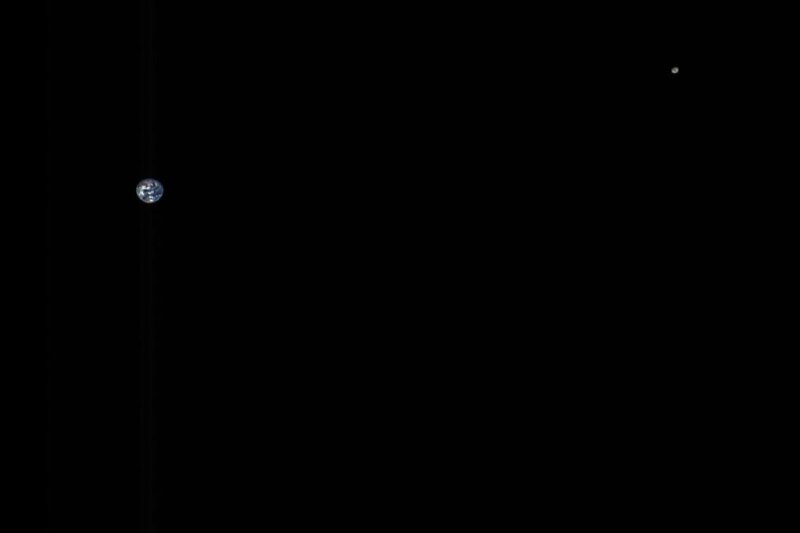The composite image of Earth and the moon was produced using data collected by the OSIRIS-REx spacecraft. Photo by NASA/OSIRIS-REx team and the University of Arizona
Jan. 3 (UPI) -- Early Wednesday morning, Earth passed its closest point to the sun, a portion of its orbit known as perihelion.
During perihelion, Earth is 91.6 million miles from the sun. At the most distant portion of its orbit, the aphelion, Earth is 94.5 million miles from the sun.
The Earth's path isn't perfectly circular -- it is oblong. Astronomically speaking, however, the 3-million-mile difference between perihelion and aphelion is small potatoes. Earth's climate and inhabitants are mostly unaffected by the difference.
"The sun is the big controller of the radiation that the Earth receives," NASA scientist Walter Petersen told Space.com. "But even when you take into account that difference in distance between aphelion and perihelion, there's only about a 7 percent difference in average global [solar energy] that we receive. And so it doesn't amount to a great deal in terms of weather."
Earth will reach it's aphelion on July 6.
The oblong nature of planetary orbits is known as eccentricity. Earth's eccentricity is subtle compared to the oval orbital shapes of other planets.
Earth's orbit isn't fixed. It's eccentricity changes over time as its orbit is affected by the gravitational pull of other planets. Thus, the exact timing and distance of its aphelion and perihelion can experience slight shifts.
Whether from 91 or 94 million miles away, the Earth would look like just a small, bright fleck in the night sky. A new image from NASA, published Wednesday, shows what Earth looks like from just 3 million miles away.
The composite image of the Earth and moon was compiled using data captured by NASA's OSIRIS-REx spacecraft, which is on its way to meet the asteroid Bennu. The probe will meet its target in August of this year. After orbiting the asteroid for two years, OSIRIS-REx will attempt to collect samples from the asteroid's surface and return to Earth.















